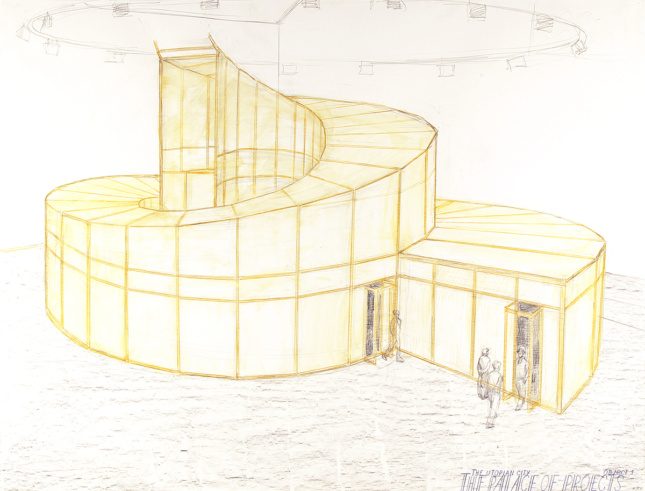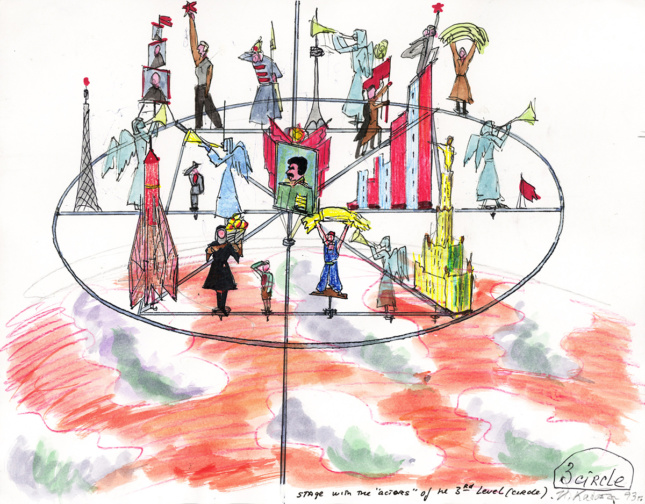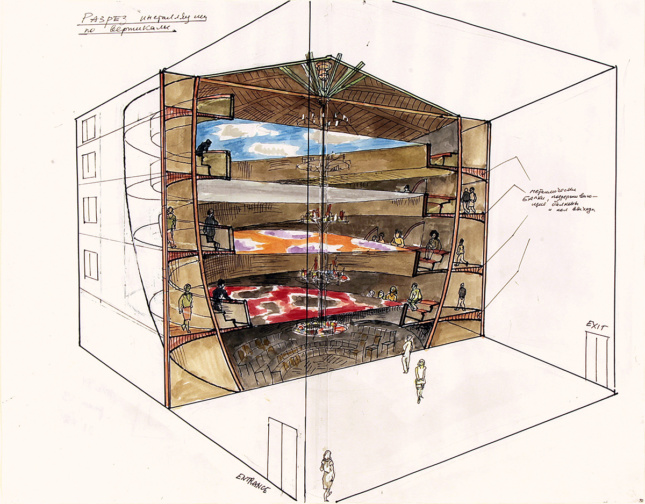“During the renaissance a lot of artists did everything,” says Emilia Kabakov in a video released by Berlin’s Tchoban Foundation Museum for Architectural Drawing. And she and her artistic collaborator Ilya Kabakov have done just about everything. Pioneers of installation art, the U.S.S.R-born, U.S.–based duo’s work, as well as Ilya’s earlier solo projects, have become seminal examples of conceptual and spatial practice in the annals of contemporary art.
Installation work and architecture often have shared affinities—not only by virtue of being architectonic in nature but also often installations must be planned and built, relying upon architectural know-how and construction practices. As with buildings, installations nearly always begin as something else: drawings, texts, or models. The Kabakovs’ illustrations and maquettes are now on display at Tchoban Foundation in an exhibition titled In the Making: Ilya & Emilia Kabakov. From Drawing to Installation that opened this past month and will remain on view until February 23, 2020.

On display are watercolors and drawings for The Toilet (1992), one of the first installations that Ilya and Emilia embarked on together. Ramshackle public toilets housing all the details of an ad hoc apartment were first exhibited next to the Fridericianum museum for Documenta IX in Kassel, Germany. There are also drawings of The Red Pavilion which was shown at the 1993 Venice Biennale, and the Palace of Projects, a 23-foot-tall spiral structure packed with 61 smaller installations over two levels, on permanent display at the Zollverein in Essen, Germany. Unbuilt works are also featured, like The Vertical Opera, which was meant to be performed at the Guggenheim.
Ilya Kabakov is one of the most prominent Soviet-born artists to reach global acclaim. Living within the Soviet Union until 1987, early in his career he spent around half the year illustrating children’s books as an “official” artist, using the rest of his time to develop his other projects, such as the pioneering installation The Man Who will Fly into Space From His Apartment. In the 1970s and 80s, he was a central figure to the unofficial Moscow Conceptualism movement. He began collaborating with Emilia in the late 1980s and they later married. Since then all their projects have been realized together. Their work is distinguished by its elaborate construction of interior spaces, at once fantastic and realistic, with various furnishings, knickknacks, letters, and other objects from daily life. Their walkable spaces, which they term “total” installations, evoke the peculiar lives of imagined occupants, connecting issues of memory and personal narrative with grander utopian ideals.




















